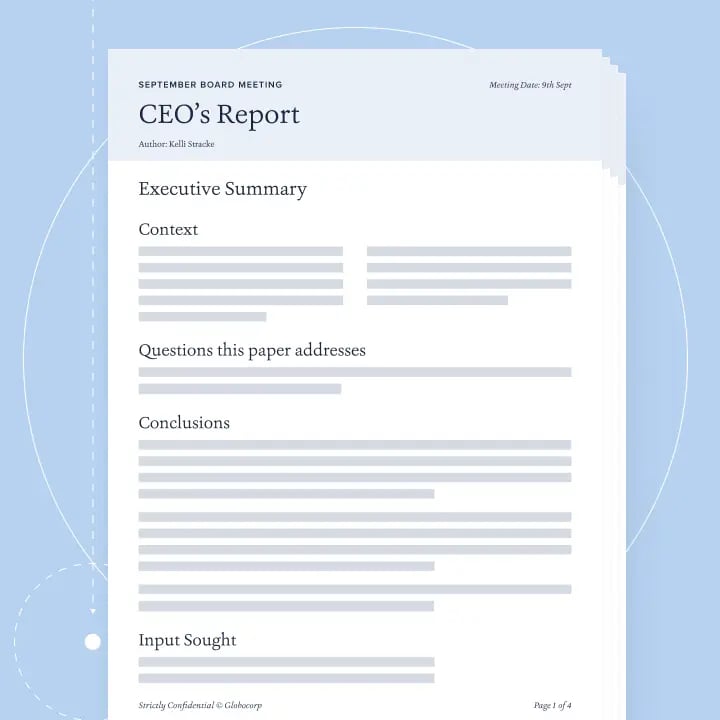What is critical thinking?
Critical thinking is the process of analysing and evaluating information to draw conclusions and make choices. It requires us to interrogate information, challenge our assumptions, and weigh up different outcomes to form rational, logical, and robust judgements. It is essential for creative thinking, problem solving, and decision making.
Why do businesses need critical thinking?
In 2001, American entrepreneurs Jason Jennings and Laurence Haughton’s best-selling book, It’s Not the Big That Eat the Small… It’s the Fast That Eat the Slow, coined a new mantra for business leaders. In the digital age, you’d need to move fast to succeed — no matter your organisation’s size.
The problem with this approach is that moving fast without thinking smartly is a recipe for breaking things — as many corporate scandals and failures since then, from WeWork’s collapse to Boeing’s ongoing problems with the 737 MAX, have reminded us.
In contrast, the world’s most enduringly successful companies have shown us that the secret to winning in the long term is great thinking — and lots of it. You can’t move fast, and in the right direction, if you don’t think first.
How does critical thinking help businesses to grow?
Critical thinking helps you spot risks and opportunities early. It helps you to understand problems properly before you start trying to solve them. It leads you to insights that might otherwise remain buried. It helps you build more robust plans, preventing costly missteps. And it relieves bottlenecks by giving leaders the confidence to empower decision-making closer to the front line.
In sum, critical thinking helps you move fast.
Take Amazon, for example. Deep and detailed thinking underpins the e-commerce giant’s ability to innovate and pivot at pace. “At Amazon we spend a lot of time writing documents, because it helps you think things through and gives others confidence that you’ve done so”, a former colleague and current Amazonian told us. “That builds trust, which helps us move quickly — you don’t have to go up the chain on every decision. Deep thinking is a hugely important part of Amazon’s entrepreneurialism.”
Yet, for many businesses, this powerful combination of critical thinking and agility is elusive. Just 14% of the business leaders who took our Agility Friction Test think their organisation moves fast and finds it easy to get things done, and 88% say they don’t have the quality of thinking they need or would like throughout their organisation.
The good news is that critical thinking is a skill we’re all capable of, and we have opportunities to hone it every day.
What's the relationship between critical thinking and questions?
Albert Einstein was onto something when he (allegedly) uttered this now-famous line:
“If I had an hour to solve a problem and my life depended on the solution, I would spend the first 55 minutes working out the question at the heart of it. Once I knew the question, I’d only need five minutes to solve the problem.”
He recognised, as had Socrates before him, that questions are powerful. They are the spark and fuel of critical thinking. They unlock our ability to reason, understand, and create. They sharpen our decisions, plans, and ideas. And they’re as vital to businesses as they are to academics. To build a culture of critical thinking, businesses need a culture of questioning. That means everyone, at every level, asking and answering questions all the time.
What are the obstacles to critical thinking?
The problem is that we’re not as good at asking questions and thinking critically as we believe we are.
We all start off as prodigious questioners. Research from Harvard shows that children bombard their caregivers with up to 100 questions a day between the ages of two and five, as they try to make sense of the world around them. But as we get older, we ask fewer questions, in part because the habit is drilled out of us.
“There is what I call an answer orientation that permeates education, professional life and society at large,” explains Dr Lani Watson, a University of Oxford academic who researches questions and questioning.
And because we value answers, we lose our ability to ask questions, which in turn reduces our capacity for creativity and critical thinking.
But that doesn’t mean we should resign ourselves to a question-less life or pass the responsibility to the minority of adults who, somehow, retain their childhood inquisitiveness. We can get our questioning mojo back. And over the past 15 years, we’ve worked with thousands of executives and hundreds of organisations to develop a way to do just that: the QDI Principle, a methodology for high-quality thinking and writing. It outlines three critical thinking rules that can help individuals, teams, and organisations to think smarter and act faster.
Every company has a vast reservoir of brainpower. We’ve written a book to show you how to tap into it.
Find out moreHow do you improve critical thinking in business?
When you next have some thinking to do — whether that’s building out a plan, reviewing performance, or submitting a request for resources — try following these three QDI Principle rules to help you identify the right questions to ask.
1. Tackle the tough questions
The questions that add most value to your thinking are the ones that cut through the noise and get you to the crux of what matters faster.
Unfortunately, they’re often the questions we’d rather shy away from — the tough ones that are difficult to answer, that surface uncomfortable truths, or trigger more questions. Or they’re the questions that are so simple and blindingly obvious that we neglect to ask them, because we assume we already know the answer or because we don’t want to look stupid by admitting we don’t. Like “What happened?”, “Why?”, and “What other options have you considered?”
Don’t hide from these questions. Seek them out and tackle them head-on.
2. Leave no stone unturned
To avoid creating blind spots or making judgements built on flawed foundations, you need to find and plug the gaps in your thinking.
So, take a step back and cast your eye over the questions you plan to tackle. Map them out visually, write them down, or talk them through with someone.
Getting the questions out of your head makes it easier to understand how they fit together and what you might be missing. For example, you might have looked at the opportunities but forgotten to think about the risks. You might have thought about the internal implications of your plan but not considered the external context.
It’s only by holding your thinking up to inspection that you can identify and fill the gaps in it — and avoid costly missteps caused by half-baked logic and ill-conceived plans.
3. Charge thinking with insight
With so much information at our fingertips, finding the insight buried within it can feel like searching for a needle in a haystack. But find it we must. Because it’s insight, and not information, that acts as the foundation for great plans and ideas.
So, challenge yourself to draw meaning from the information in front of you by asking “So what?” and “What needs to be done differently as a result?”
Asking these two simple questions will help you draw this meaning out, so you can charge your thinking with actionable insight.
How do you translate critical thinking into business outcomes?
Once you've surfaced high-quality insight, you need to communicate it effectively.
Great thinking will lead nowhere if it stays in your head or on a piece of paper; you might need to get the buy-in of your team to put your plan into action, or secure additional resources to put your recommendations into practice. Your insights could also shape the thinking of other teams and drive better decisions elsewhere in the business.
This starts with a high-impact executive summary, which condenses the key insights to a handful of actionable takeaways. You can also find a number of tips in our guide to effective communication, which will help you deliver those key messages in a clear, concise, and compelling style — whether you are sharing them in writing, on slides, or verbally.
How do you turn critical thinking into a daily business habit?
Now you know how to surface the right questions, and communicate the answers effectively, you need to make asking them a habit — an easy yet unavoidable part of your own and your team's working lives. Fortunately, our daily routines are full of opportunities to do this. They lie in the activities that every business is run on, like quarterly business reviews and annual planning cycles.
Most of the time, people start preparing for set-piece activities like these by jumping straight into the weeds, pulling every imaginable cut of data together and then attempting to explain what it all means in a long and detailed document.
But to get everyone thinking harder about the topic at hand, the prep work should start not with research or the data that’s available, but with the critical questions that everyone involved in the activity needs to grapple with. Those questions should be used to focus the prep work, organise the information (as headings or sub-headings in a report), and structure the discussion that follows (as the meeting agenda). This makes it hard for people to avoid engaging with those questions and, through repetition, it creates an expectation: “This is how we do things around here.”
Leaders can do some of this work in advance and package questions up into set plays for routine interactions, to help their teams identify the critical questions and cut to insight more quickly. We call them QDI plays.
Like a quarterback barking out a coded signal on the football field (“Green 19, Green 19, set hut!”), you select the right set of questions for the task, be it a monthly performance review or preparing a business case for your boss to sign off on, from a bank of preloaded “plays”. You then frame the meeting, email, report or slide deck, and the thinking that goes into it, around those questions.
For example, if you’re preparing for a regular performance update, you could use a QDI play like this:
- What are we trying to achieve?
- What’s gone well and what has not?
- What are the key risks and opportunities?
- Given all of this, what should we stop doing, start doing, or do differently?
- Are we confident we’ll achieve our aims?
Each of these questions can lead to further questions, but starting with the most obvious and important ones gives your thinking a solid foundation. It puts some guard rails in place to keep you focused, so you don't veer too far off course. It makes helps you to make sure you're covering all the bases and tackling the most important questions head on. It also stimulates your creativity by asking you to think about doing things differently.
You can see similar approaches used in a wide variety of organisations and contexts. Take the British Army, for example: since 2001, they’ve used a seven-question framework called the Combat Estimate to help commanders rapidly formulate plans, even in the most difficult circumstances.
The specific questions you ask will vary with the situation, but the approach should always be to keep it simple and make it easy to use. Before long, asking the right questions becomes something that people do every day.
How do you turn critical thinking into a business-wide habit?
The key to getting an entire organisation to think well is to make it difficult for everyone not to do it well. The companies that do this best don’t rely on report and agenda templates or training alone. They use technology to show people when they’ve missed the mark and help them to find their way back to it.
It’s similar to a Japanese concept called poka-yoke, or “mistake-proofing” — designing a product or process in a way that makes it really hard to screw up. The term was coined on Japan’s manufacturing floor in the 1960s, and applications of poka-yoke can today be found in most modern manufacturing processes as well as everyday life. Like automatic cars that won’t start if they’re not in “park” or “neutral”, so you don’t lurch forwards (or backwards). Or filing cabinets that won’t let you open more than one drawer at a time, to stop them falling over.
These days, modern software tools can be used in much the same way, to get you off to a solid start and then nudge and guide you back to the path when you stray off it. AI, in particular, can be a powerful aid; its immense capabilities to analyse text can nudge report writers in the right direction and act as a critical, always-on-call friend.
That’s why we built Lucia, an AI-powered thinking and writing guide. It can give instant feedback and real-time prompts that challenge what your team members are writing, as they’re writing it, nudging them in the right direction and continuously training them.
Have they considered the risks? Are they looking forwards as well as backwards? Are they sharing the bad news as well as the good? Lucia’s AI tools will ask these questions and suggest ways of fixing the problems it finds, so that, over time, razor-sharp critical thinking becomes a habit for everyone — and you can unlock your team’s collective intelligence to move faster.
How can you start building critical thinking habits in your business today?
If you want to start building your team’s critical thinking habits today, talk to our advisory team or take a look at Lucia, our AI-powered management reporting software. It offers live feedback, real-time prompts, smart automatic editing tools — and much more.
Additional resources
If you’d like to learn more and find out how to apply these principles to specific papers, check out our best practice guides below.
How to…

A thinking and writing platform that helps you to write brilliantly clever and beautiful reports that surface breakthrough insights and spur your business to action.
Find out more


